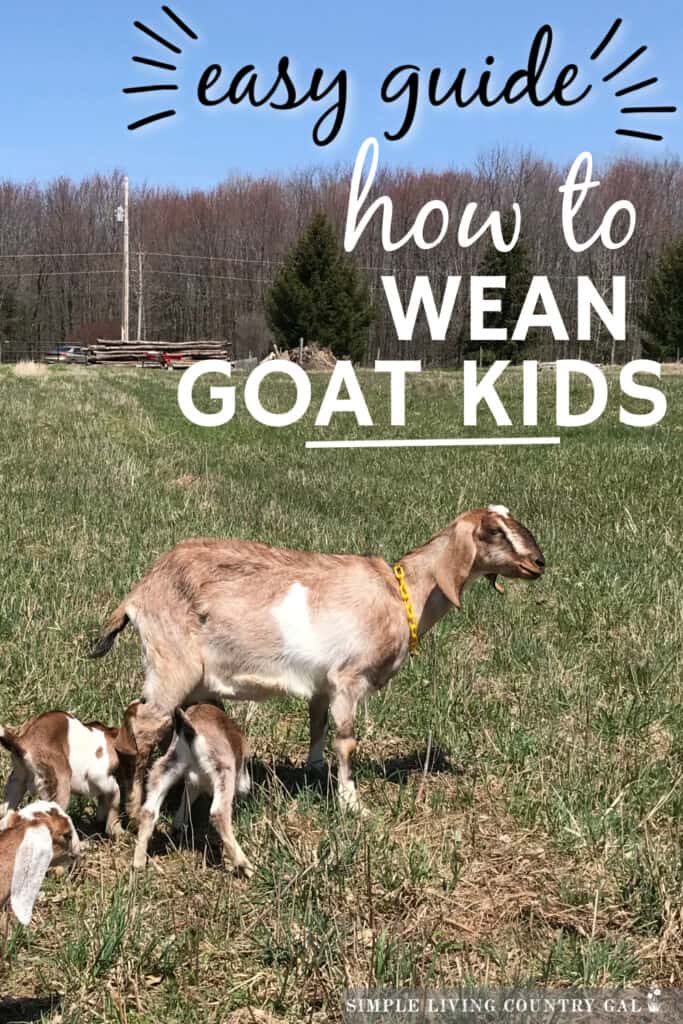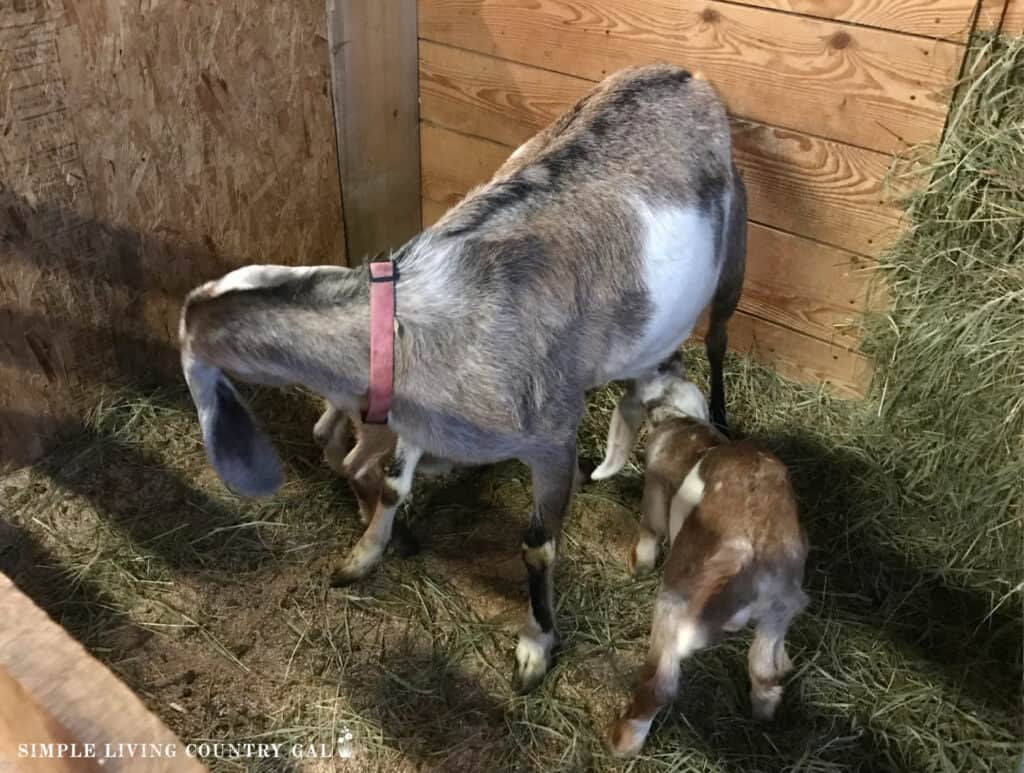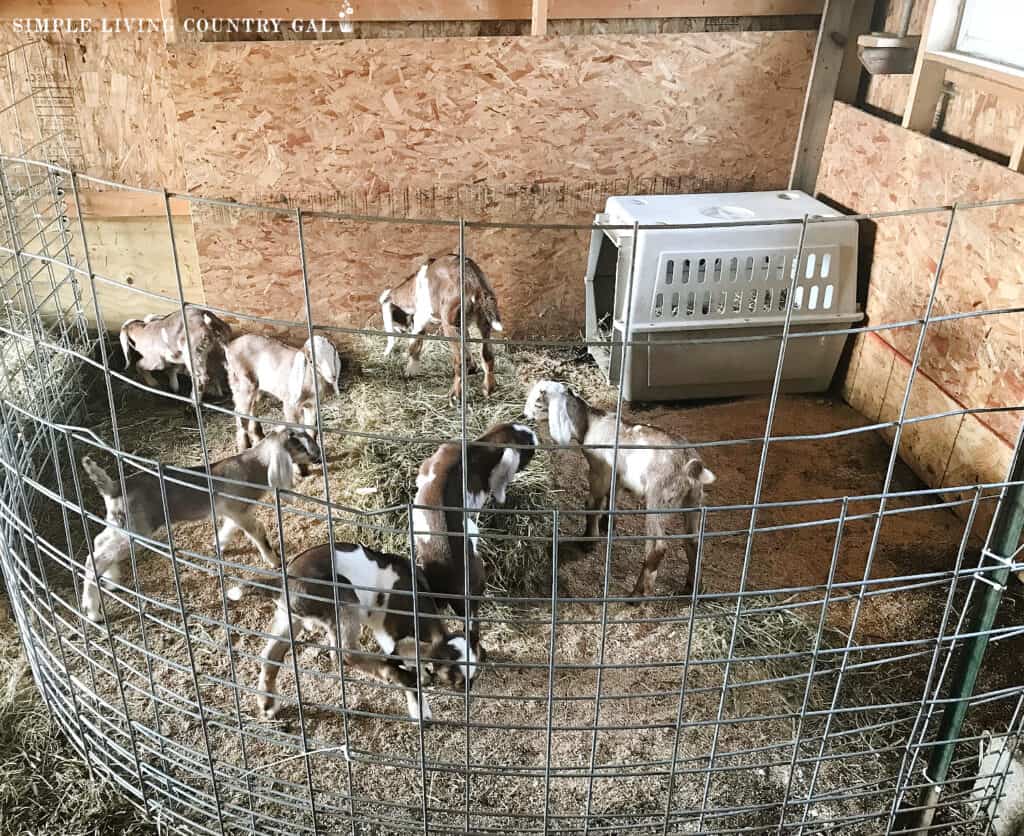When and How to Wean Goat Kids
Breeding and kidding goats is essential to a dairy herd, and with that comes a whole other set of things to learn. This article will cover when and how to wean goat kids, so you know the timing and the process of keeping things as stress-free as you can.
Goat breeding and goat kidding from kid to doe that will give you the milk you need for you and your family.

Weaning can be a stressful time for both goats and their owners. It is an important milestone that goat breeders need to understand, as it often marks the beginning of adulthood and sets up the kids for success throughout the rest of their lives. While this process is not always easy, understanding when and how to wean goat kids will help ensure that everyone involved feels comfortable during this transition period. We’ll walk through when it’s appropriate to begin the weaning process and discuss various approaches on how best to handle it so that your goats -kids and doe-handle the change with minimal stress.
What does weaning mean?
Weaning refers to separating the kids from their mother’s milk and transitioning them to a solid food diet. This typically occurs when the kids are between 8-12 weeks old, although some breeders may choose to wean earlier or later depending on the specific needs of their herd.

What is weaning important?
Weaning is essential for both doe and kid’s overall health and well-being. For the kids, it allows them to develop their digestive systems fully, learn how to eat solid food and become more independent as they enter adulthood. Weaning also gives goat owners full access to a doe’s milk that can supply a home until the next breeding season.
When to start weaning
If you milk your goats, then you will want to start night weaning at about two weeks. Night weaning is when you separate the kids from the doe overnight. This will allow you to milk the doe each morning prior to letting the kids back in with their mothers. Do not worry about the kids not getting enough milk. The doe will hold back what they need, and they will have access through the rest of the day to nurse on demand.
Full weaning usually happens anywhere from 8-12 weeks of age. However, if you notice that the kids are starting to nibble on solid food and show less interest in nursing, it may be a sign that they are ready to wean. If goat kids are the right age, a good healthy weight, and eating grain as well as hay, these are both clues you are ready to start weaning them.

How to wean
To effectively wean your goat kids, it is best to do so gradually. Sudden changes in diet or environment can be stressful for the kid and the mother. Start by separating the kids from their mothers for a few hours each day, increasing the time apart as they become more comfortable with eating solid food and being away from their mothers. This process should take about 2-3 weeks to fully wean the kids.
To ensure a smooth transition, make sure the kids have access to clean water and quality hay at all times. Gradually introduce them to grain as well, which will help supplement their diet and provide essential nutrients for growth. It is important to monitor the kids’ weight during this time and adjust their diet accordingly.
What is a goat kid pen?
A goat kid pen is a separate area that only the kids have access to. You can put all the kids in this pen a few times each day, helping them to learn how to be without mom. This will also give the does a break, and you can let them out to pasture during that time.
Kid-friendly
- Water
- Kid-friendly grain
- Fresh hay
- Shelter for them to rest in
- A few things to climb and play on

What do goat kids eat?
After being weaned off milk, goat kids should be fed a diet that is appropriate for their age and size. This can include:
- High-quality hay or pasture forage
- A grain mix specifically formulated for young goats
- Mineral and salt blocks to ensure they are getting all the necessary nutrients.
Tips for a stress-free weaning experience
Weaning is an important stage in a goat kid’s life and it can be a stressful experience for both the kids and their mothers. However, with some careful planning and preparation, you can make the weaning process as stress-free as possible. Here are some tips to help you successfully wean your goat kids without causing unnecessary anxiety or discomfort.
- Gradually separate the kids from their mothers, increasing the time apart as they become more comfortable.
- Ensure that the kids have access to fresh water and quality hay at all times.
- Slowly introduce grain to supplement their diet and provide essential nutrients for growth.
- Monitor the kids’ weight during this time and adjust their diet accordingly.
- Use a kid pen to help the kids learn to be without their mothers and give the does a break.
- Provide a kid-friendly environment with water, grain, hay, shelter, and items for them to climb and play on.
Dairy Goat Supplies:
Estink Manual Goat Milking Kit, 3L Plastic Portable Household Goat Milking Machine Manual Operation Sheep Cow Milker Kit Hand Pump Milker Machine for Farm Household Cow Goat Milking (for Sheep)




![WIDE Mouth Mason Jar Lids [16 Pack] for Ball, Kerr and More - White Plastic Storage Caps for Mason/Canning Jars - Leak-Proof](https://easyproductdisplays.com/wp-content/uploads/2017/07/buy6.gif)
How to help the mother goat cope during the transition period
As important as it is to help the kids during the weaning process, it’s equally important to provide support and care for their mothers. Weaning can be a difficult time for them as they adjust to no longer nursing their young. Here are some tips on how you can help your mother goats cope during this transition period.
- Gradually decrease the amount of grain and hay given to the does to prevent mastitis.
- Monitor their udders for any signs of infection or discomfort.
- Provide a comfortable, clean area for the mothers to rest in and take breaks from grazing.
- Give them extra attention and affection during this time to help ease any stress or anxiety they may experience.
- If needed, consider separating the mother goats from the herd to reduce competition for food and provide a more peaceful environment.
- Consult with a veterinarian if you notice any concerning behavior or health issues in the does during this period.
- Remember that every mother goat is different and may cope with weaning in her own way, so be patient and understanding throughout the process.

How to make sure the kids adjust well after being weaned off milk
It’s important to not only support the does during this transition period but also ensure that their kids adjust well to being weaned off milk. Here are some tips on how you can make sure that your kids have a smooth and successful transition from milk to solid food.
- Gradually introduce solid food to the kids while they are still nursing, so they can gradually get used to the taste and texture.
- Offer a high-quality, nutrient-rich diet that is appropriate for their age and size.
- Ensure that clean and fresh water is always available for the kids, as they will now have to rely on it for hydration instead of milk.
- Provide a safe and secure shelter for the kids to rest and play in, away from adult goats that may push them around.
- Keep an eye out for any signs of stress or illness in the young goats, such as decreased appetite or lethargy. Consult with a veterinarian if needed.
- Be patient and consistent with the weaning process, as it may take some time for the kids to fully adjust.
- Monitor the weight and growth of the kids to ensure they are getting enough nutrition from their solid food diet.
Overall, the weaning process for goat kids can be challenging and requires careful attention to their needs. By following these tips and, providing a nutritious diet, shelter, and monitoring their health, you can ensure that your goat kids have a successful transition from milk to solid food.






![WIDE Mouth Mason Jar Lids [16 Pack] for Ball, Kerr and More - White Plastic Storage Caps for Mason/Canning Jars - Leak-Proof](https://m.media-amazon.com/images/I/315hC2lw8+L._SL500_.jpg)
